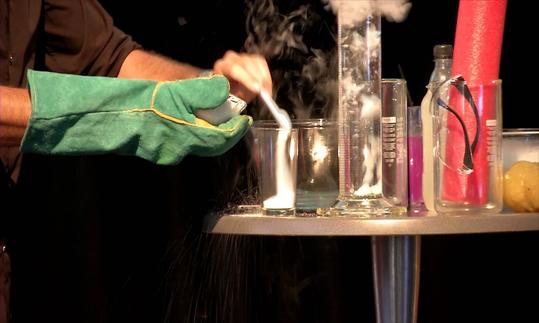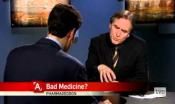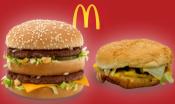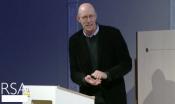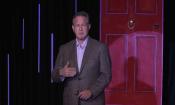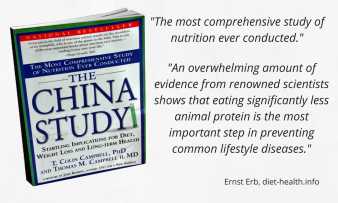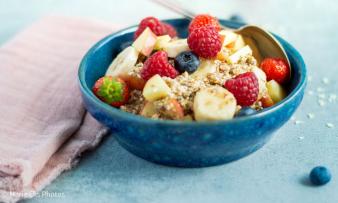The mathematics of weight loss | Ruben Meerman
Also known as “The Surfing Scientist,” Ruben Meerman is a physicist, the author of “Big Fat Myths,” and a well-known public speaker. He hosts various scientific shows on Australian television, performs scientific demonstrations for school children, and writes science education materials. He is currently researching the chemistry of weight and the issue of what happens with the fat when you lose weight.
“The Mathematics of Weight Loss” tries to answer the question of “When you lose weight, where does the fat go?” In his talk, Ruben Meerman shows that 84 % of a fat molecule’s mass becomes carbon dioxide (which we breathe out!) and 16 % becomes water. This fact reinforces the idea that in order to lose weight, you have to eat fewer calories and/or move more.
3:20: The average human fat molecule is made up of exactly the same atoms as water — H2O and carbon dioxide — CO2 (i.e., hydrogen, oxygen, and carbon), in the amount of C55H104O6 — when balanced.
4:31: The chemical formula showing how the fat molecule, in the presence of oxygen, is transformed into carbon dioxide and water. Fat, oxygen, carbon dioxide, and water can all be measured in kilograms, while energy is measured in kJ (kilojoules) and itself has no weight.
Simplifying the complex structure of fat in these simple building blocks releases the power we call calories. However, the new components have the same mass. But now the fat is in a form we can and do exhale!
5:53: How plants form sugar under direct sunlight and how much fructose you end up ingesting when you drink 600 ml of lemon-flavored drink. Plants use CO2 and H2O (water), and in combination with the energy of the sunlight their chlorophyll is then able to produce sugars and other substances. We do just the opposite and take out the energy again. In both cases, weight stays the same.
8:11: The difference between gastrointestinal transit (food passes through the digestive passage), digestion (food is broken down into small constituents and absorbed into the blood stream), and metabolism (substances reach the cells and are transformed into energy) is explained.
9:48: Meerman performs an experiment to show that sugar is transformed into carbon dioxide and water when we use it up. He starts by blowing up a balloon, pointing out that 5 % of its content is invisible CO2, the result of his body metabolizing breakfast. He pours liquid nitrogen (a cryogenic fluid with a temperature of –196 °C) over the balloon, making it shrink and crumple. The oxygen in the balloon turns into a liquid while the carbon dioxide becomes solid. People can see both of these for a couple of seconds, before they turn into gas again.
By this, Meerman shows that when we lose weight, we, in fact, eliminate substances, atoms, with a specific mass — by exhaling. This is the only natural way our fat is used up! And this happens with every exhale. It doesn’t matter if it comes from what we eat now or if we burn up fat stores, unbalancing or balancing our input versus need for energy.
12:29: According to the principle of mass conservation, when you lose weight, you lose atoms. You have to eliminate them from the energy — to be able to exhale them. But first you have to eat fewer calories so that your body has to get the calories from your fat stores.
13:15: 10 kg of fat are eliminated from the body as 8.4 kg of CO2 and 1.6 kg of water.
17:31: Meerman answers some frequently asked questions such as “Would breathing more lead to weight loss?” and “Does weight loss cause climate change?”
20:26: Ketosis and how the body is able to transform fat reserves into glucose when the quantity of carbohydrates ingested is not enough to support body functions.
21:00: In order to lose weight, you turn fat into carbon dioxide and water. To do this, all you have to do is “move more, eat less, and keep breathing.” Eating less does not refer to the weight of what you eat but rather to how many calories you eat! In the case of weight loss, you have to eat fewer calories compared to what the body needs.
More videos
To understand health and ecology, extensive basic knowledge is required. Here you will find fact-based texts and book reviews.
Due to a lack of knowledge, vegetarians, vegans, and raw foodists often eat unhealthily – for years or even decades. This basic knowledge can prevent this.
The China Study clearly lays out how the current Western diet can be improved to prevent lifestyle diseases. We say: Most important book on nutrition and health
Erb Muesli with Rolled Oats is a vegan (lactose-free), raw muesli. It serves as an especially healthy breakfast and is a good “bread replacement.”
These Cucumber Rolls with “Goat’s Cheese” and Mint Sauce hold together surprisingly well. They are ideal as an appetizer or finger food.
Sun-dried chili peppers and parsley give the savory pea pancakes a special flair. We recommend trying the pancakes with curry.

